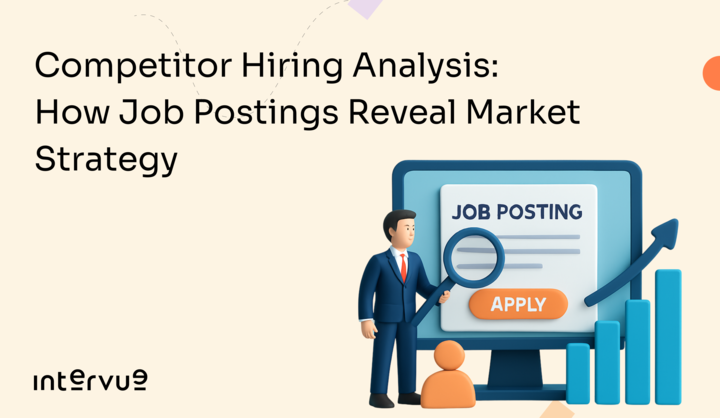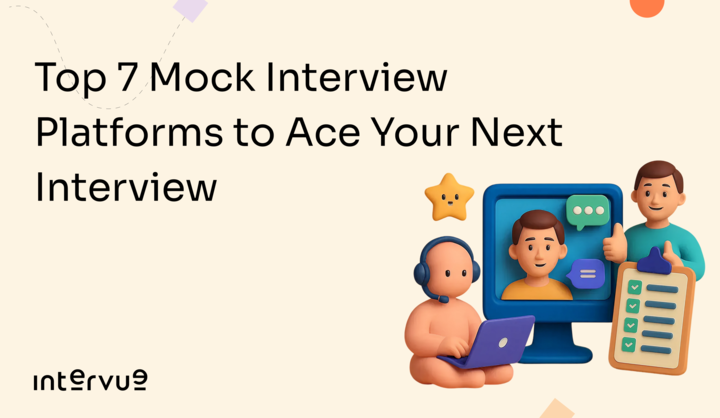Competitor Hiring Analysis in 2025: How Job Postings Reveal Market Strategy
Competitor hiring activity isn’t just HR trivia. It’s one of the clearest and earliest signals of strategic movement inside any company. By tracking job postings, recognizing patterns, and validating with external data, you can turn hiring data into predictive intelligence.

When companies analyze competitors, they usually chase product updates, pricing shifts, or new funding rounds. But few realize that the real clues often appear much earlier in job postings.
Every hiring decision your competitor makes tells a story: what technology they’re betting on, which markets they’re entering, and how their strategy is evolving. Competitor hiring analysis is becoming one of the most underrated forms of market intelligence helping companies uncover strategy shifts before they’re announced.
In this article, we’ll unpack how to read those hiring signals, explore verified data from global reports, and show how to turn job postings into actionable competitive advantage.
Why Hiring Activity is a Strategic Signal
Imagine this: your biggest rival suddenly posts ten new roles for “Machine Learning Engineer Responsible AI” in a market where they haven’t operated before. That signals more than just hiring; it indicates expansion, product direction, or a new strategic initiative.
Here’s what analyzing competitor hiring data can reveal:
- Technology direction and tool adoption: Job descriptions often list frameworks, platforms, and infrastructure choices.
- Geographic expansion: New openings in emerging markets can indicate delivery hubs or regional cost strategies.
- Organizational priorities: Reporting lines, such as “Reports to VP of AI,” show how critical certain functions are becoming.
- Hiring urgency or difficulty: Repeated or long-open listings can highlight retention challenges or weak pipelines.
Each of these signals, when tracked over time, helps you anticipate shifts before they become public.
What the Latest Data Tells Us
Recent studies (2024–2025) reveal that job postings are one of the best early indicators of market movement. Let’s look at a few key takeaways.
1. Hiring Cycles Are Slowing Down
According to Huntr’s Q2 2025 Job Search Trends Report, which analyzed 461,000 applications and 285,000 job ads, the median time to first offer rose 22% to 68.5 days. This slowdown signals growing competition for top talent and longer decision cycles.
2. Openings Are Up, But Hiring Is Down
BambooHR’s July 2025 Workforce Insights Report found that job openings increased 21% globally, while actual hiring dropped by 20%. Many companies are posting roles but pausing actual onboarding due to tighter budgets or evolving role requirements.
3. Global and Remote Hiring Continue to Rise
Oyster’s 2025 Global Hiring Trends Report shows that 58% of organizations now employ remote tech talent across borders, double the rate from 2020. Competitors hiring in new geographies may be building distributed teams to scale faster or reduce costs.
4. Skill-Based Hiring Is Replacing Degree Bias
An analysis of 11 million UK job listings (2018–2024) found that employers in AI and sustainability sectors reduced degree requirements by 15% while AI-related roles grew 21%. This suggests a focus on hands-on skillsets over formal credentials.
5. Hiring Intent Is Outpacing Realization
Indeed’s 2025 US Hiring Trends Report notes that many firms post roles but hesitate to fill them. Instead, they are investing in employer branding, AI recruiting tools, and internal mobility to manage slower markets.
How to Turn Job Postings into Competitive Intelligence
Here’s how to translate raw hiring data into strategic insight without needing a dashboard full of charts.
1. Start with a Competitor Watchlist
Choose 3–5 direct competitors and a few emerging players in adjacent sectors. These “lens companies” provide a balanced view of your market’s evolution.
2. Collect Job Data Across Platforms
Scrape postings from multiple sources: LinkedIn, company career pages, niche job boards, and regional platforms. Tools like Contify or LinkUp automate this at scale by monitoring thousands of sites.
3. Enrich Each Posting with Metadata
Track key fields such as:
- Job title and function
- Required skills or technologies
- Reporting hierarchy and seniority
- Location (remote, hybrid, or on-site)
- Posting frequency and duration
Analyzing these over six to twelve months reveals which teams are expanding, shrinking, or being restructured.
4. Identify Emerging Patterns
Look for:
- New functions such as “AI Safety” or “MLOps” that hint at pivots.
- Regional hiring spikes in new markets.
- Reposted roles that signal recruiting struggles.
- Mentions of niche tools like “LLaMA 3” or “quantum-safe cryptography.”
- Changes in seniority mix showing scale-up phases.
5. Validate with Secondary Signals
Cross-reference hiring spikes with:
- Press releases or funding news
- Leadership appointments
- Product launches or new verticals
If hiring signals align with these public moves, you have confirmation. If not, you may have discovered an under-the-radar strategy.
Case Study: Microsoft’s AI Hiring Surge Predicted Its Copilot Strategy
Before Microsoft publicly launched Copilot for Office 365, its job postings told the story first.
Between September 2022 and January 2023, data from LinkUp and Reuters showed AI-related roles increased by nearly 40%, even as layoffs occurred in other departments.
Job titles like “Prompt Engineer,” “AI Safety Manager,” and “Responsible AI Lead” emerged none of which existed six months prior.
- Locations: New AI teams were being built across Redmond, Dublin, and Hyderabad, signaling global AI infrastructure development.
- Technologies: Listings referenced GPT models, reinforcement learning, and AI orchestration layers long before product demos appeared.
- Hiring continuity: Despite layoffs in HR and support teams, AI recruitment continued showing a strategic shift rather than contraction.
By the time Copilot was announced in March 2023, anyone analyzing Microsoft’s hiring activity could have predicted the move months in advance.
Why Competitor Hiring Data Matters
If you were at Google, Zoom, or Atlassian, tracking this hiring data could have provided an early signal to adjust your own roadmap or messaging.
Across industries, hiring data can reveal:
- DevOps hiring surges → scaling infrastructure
- Sales enablement roles → go-to-market expansion
- Data privacy positions → compliance or regional launches
Job postings often shift before public announcements, making them one of the earliest indicators of business strategy.
Turning Insight into Action
To make this intelligence actionable:
- Align your hiring roadmap: Build talent pipelines where competitors are investing.
- Benchmark compensation and perks: Use public salary data to craft stronger offers.
- Shape your product focus: Track domain-specific roles (like AI inference or privacy) to anticipate where the market is heading.
- Refine your employer brand: If competitors struggle to fill roles, learn from their missteps.
- Monitor hiring pullbacks: Sudden job removals can indicate pivots, restructuring, or funding challenges.
Tools like Contify, LinkUp, and TalentNeuron now automate this entire workflow, surfacing spikes, functional shifts, and anomalies in competitor hiring data in real time.
Final Thoughts
Competitor hiring activity isn’t just HR trivia. It’s one of the clearest and earliest signals of strategic movement inside any company. By tracking job postings, recognizing patterns, and validating with external data, you can turn hiring data into predictive intelligence.
In a market where speed and foresight define winners, reading between the job listings could be the smartest move your strategy team makes this year.



